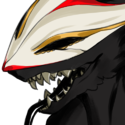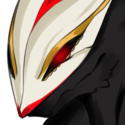Difference between revisions of "Vulperines"
m (→Description) |
|||
| (8 intermediate revisions by the same user not shown) | |||
| Line 24: | Line 24: | ||
'''Skin:''' While rarely seen beneath their full-body coats of fur, vulperine skin is usually pale or lightly tanned. | '''Skin:''' While rarely seen beneath their full-body coats of fur, vulperine skin is usually pale or lightly tanned. | ||
| − | '''Hair:''' Red, | + | '''Hair:''' Red, gray, or shades of blue and white are most common. Hair color differs from body-fur colors. |
'''Eyes:''' Vulperine eyes have black, slitted pupils similar to a cat's. Their irises are typically gold or red in coloration, but shades of dark blue, green, and pink are not unheard of, especially among northern tribes. | '''Eyes:''' Vulperine eyes have black, slitted pupils similar to a cat's. Their irises are typically gold or red in coloration, but shades of dark blue, green, and pink are not unheard of, especially among northern tribes. | ||
| Line 37: | Line 37: | ||
---- | ---- | ||
<blockquote> | <blockquote> | ||
| − | Vulperine are fox-like beastkin, similar in body structure to lupines though smaller in stature and slighter of build on average. The largest populations of vulperine are found in the south of the former Belharan empire, and typically have reddish or dark | + | Vulperine are fox-like beastkin, similar in body structure to lupines though smaller in stature and slighter of build on average. The largest populations of vulperine are found in the south of the former Belharan empire, and typically have reddish or dark gray coloration; smaller tribes of hunter-gatherer vulperines also live in the Frost Marches and beyond, where individual fur patterns have adapted white and blue tones to better blend into the often-snowy environs. |
Male vulperine stand a bit taller and broader-shouldered than females. Female vulperine tend to have much wider hips and more distinctively fur-patterning on their forelimbs, reminiscent of stockings and gloves. They have breasts averaging at C-cups, and after pregnancy both the breast and the mother's middle tend to remain permanently heavier. | Male vulperine stand a bit taller and broader-shouldered than females. Female vulperine tend to have much wider hips and more distinctively fur-patterning on their forelimbs, reminiscent of stockings and gloves. They have breasts averaging at C-cups, and after pregnancy both the breast and the mother's middle tend to remain permanently heavier. | ||
| Line 71: | Line 71: | ||
Only one of the conditions below must be met to unlock the Vulperines Codex entry: | Only one of the conditions below must be met to unlock the Vulperines Codex entry: | ||
*Met [[Raphael]] as [[Kinu]] during the events of [[The Princess Blade]] | *Met [[Raphael]] as [[Kinu]] during the events of [[The Princess Blade]] | ||
| + | *Met [[Nieves]] at the [[Vixen's Arcane Arsenal]] in [[Khor'minos]] | ||
| + | *Encountered the [[Vulperine Hunters]] in [[Windy Peaks]] | ||
| + | *Entered the [[Vulperine Village]] in [[Windy Peaks]] | ||
==Other Information== | ==Other Information== | ||
| + | {|class="wikitable bordered" border="1" cellpadding="2" style="margin-left: auto; margin-right: auto; border: none; text-align:left" | ||
| + | |- | ||
| + | !|Aliases | ||
| + | | | ||
| + | *Fox | ||
| + | |- | ||
| + | !|Adjectives | ||
| + | | | ||
| + | *Vulpine | ||
| + | |- | ||
| + | !|Cute Adjectives | ||
| + | | | ||
| + | *Fox ''(masculine) | ||
| + | *Vixen ''(feminine) | ||
| + | |- | ||
| + | !|Short Name | ||
| + | | | ||
| + | *Fox | ||
| + | |} | ||
===Transformatives=== | ===Transformatives=== | ||
---- | ---- | ||
| Line 90: | Line 112: | ||
==Characters== | ==Characters== | ||
| − | {|class=" | + | <tabber> |
| + | Notable characters= | ||
| + | {|class="table" style="margin-left: auto; margin-right: auto; border: 2px solid #929292; cellpadding:1px; " | ||
|- | |- | ||
| − | |[[ | + | |{{WikiHeadshot-index|name=Arened}}{{WikiHeadshot-index|name=Inaya}}{{WikiHeadshot-index|name=Kailani}}{{WikiHeadshot-index|name=Natalia|text=(half-[[Cowgirl|cowgirl]])}}{{WikiHeadshot-index|name=Nieves}}{{WikiHeadshot-index|name=Raphael}} |
| + | |} | ||
| + | |-| | ||
| + | Generic characters= | ||
| + | {|class="table" style="margin-left: auto; margin-right: auto; border: 2px solid #929292; cellpadding:1px; " | ||
|- | |- | ||
| − | | | + | |{{WikiHeadshot-index|name=Taothian|text=(transformed)}}{{WikiHeadshot-index|name=Taothian Mage|text=(transformed)}}{{Headshot-index|name=Vulperine Empath|ow=1}}{{Headshot-index|name=Vulperine Hunter|ow=1}} |
|} | |} | ||
| + | </tabber> | ||
[[Category:Races]] | [[Category:Races]] | ||
| + | [[Category:Wiki page status - Pending information]] | ||
Latest revision as of 08:37, 28 February 2025
"But do allow me to introduce myself! Why, I am Raphael — previously adventurer extraordinaire, redistributor of misplaced wealth and connoisseur of all things fine in life. I will say, for demons, you people have such exotic and exquisite wares and such beautiful aesthetic; it truly brings me back to my younger days."
—Raphael, the Russet Rogue
Writer Credit
| Savin |
|---|
|
Codex
Name: Vulperine(s). More commonly known Foxen or Foxfolk.
Sexes: Males, females, and hermaphrodites.
Height: 5ft. to 6 ft. on average, with males typically being a bit taller than females.
Weight: Roughly the same as humans.
Skin: While rarely seen beneath their full-body coats of fur, vulperine skin is usually pale or lightly tanned.
Hair: Red, gray, or shades of blue and white are most common. Hair color differs from body-fur colors.
Eyes: Vulperine eyes have black, slitted pupils similar to a cat's. Their irises are typically gold or red in coloration, but shades of dark blue, green, and pink are not unheard of, especially among northern tribes.
Ears: Tall, alert fox-like ears.
Lifespan: Vulperine have lifespans roughly the same as humans.
Maturity: 18 years.
Description
Vulperine are fox-like beastkin, similar in body structure to lupines though smaller in stature and slighter of build on average. The largest populations of vulperine are found in the south of the former Belharan empire, and typically have reddish or dark gray coloration; smaller tribes of hunter-gatherer vulperines also live in the Frost Marches and beyond, where individual fur patterns have adapted white and blue tones to better blend into the often-snowy environs.
Male vulperine stand a bit taller and broader-shouldered than females. Female vulperine tend to have much wider hips and more distinctively fur-patterning on their forelimbs, reminiscent of stockings and gloves. They have breasts averaging at C-cups, and after pregnancy both the breast and the mother's middle tend to remain permanently heavier.
Reproduction
Reproduction among vulperines is fundamentally lupine-like: males have knotted phalluses six to eight inches long, and females have dark-lipped vaginas into which the knots securely tie during mating. Pregnancy lasts seven months, in the latter stages of which expectant mothers will begin to lactate. Litters of newborn kits are born blind, and number between two and four per pregnancy. Kits remain helpless for their first six months, during which time they must be breastfed and tended to meticulously. Shortly after their eyes open, kits can begin to eat soft foods and will quickly learn to crawl. After this point, raising them is fundamentally human-like.
Having been former subjects of the human- and elf-dominated Belhar, vulperines of the south have a long history of interbreeding successfully with humanoid races. Half-vulperine have human features with foxen ears and tails, and may have fur patterns on their forelimbs; males will have fox-like genitals.
History
Vulperines have been a part of Imperial history almost as long as it has been recorded. The species is native predominantly to the southern reaches of the continent, where their towns and villages are widespread along the coast. The vulperines put up a protracted fight against the first Imperial legions to arrive in the region, and rebellions continued for the better part of a century. They were quick to raise arms against their masters during the first Tronarii-Belhar war, joining en-mass with the first Tronarii forces to arrive on the continent such that the largely-mercenary force nearly doubled in size before it reached its first battles with Belhar.
The chaos of the invasion continued at length until Emperor Edivus II personally lead a fleet to reconquer the region. He returned to the Holy City triumphant with thousands of foxen in chains and the head of the Tronarii king on a pike; soon after, the former vulperine lands became among the most prosperous Imperial colonies, its rich reserves of tin and gold made to fill the Imperial treasuries and arm its legions. From that day until the empire's end, vulperine lands were ever-after closely monitored by Imperial governors, and occupied by Belhar's most elite soldiers. To command Legio Vulperinus was considered one of the highest honors a Belharan soldier could be granted — and one of the most profitable.
Society & Culture
Even after Belhar's collapse, the southern vulperines remain deeply shaped by its centuries of influence upon their lands. Their cities are eminently Belharan in shape and construction, protected by Imperial walls and supplied by its aqueducts. Vulperines have a reputation among humans for being attractive and charming (and also deeply prone to thieving and other mischief); while during Imperial times this made slave and whore the leading occupations of the region, since the Godswar the region has had a minor resurgence of the arts and, particularly, in architecture. Vulperines are a deeply religious people, dominated by the Velunite faith, and great cathedrals interwoven with magically-grown oak trees acting as buttresses are becoming a common sight in the south. The church of Sorra also took root during the Belharan occupation in her guise as goddess of freedom and liberty; many mountaintop shrines were built in secret to her worship, and after the Godswar they have been greatly expanded into sprawling temple complexes.
The ample quality stone from the shielding mountains in the north of the region, combined with what's left of its reserves of tin and gold, have lead to the region being quite quick to rebuild from the wars, though the population was severely depleted by the Wraiths — and even to this day, many coastal cities and mining towns are largely abandoned, their inhabitants consolidating what remained of their civilization into a few scattered settlements that they can properly defend and reconstruct.
Southern vulperines share a great deal of contact with humans, elves, harpies, and taeleer. Naga and centaurs are common on the grassy plains inland from their domain, as well. It's not uncommon to see adventurous vulperines as far north as Yvennes, carried by the winds of trade and exploration.
In the far north, however, is another population of vulperines entirely — those with winter-colored fur, native to the Frost Marches. These boreal vulperine are scattered and tribal, amounting to little more than hunter-gatherers surviving in the nordic tundra. Most of the boreal vulperine in the Marches were chased off from their ancestral lands by the arrival of kitsune colonists from overseas during the Godswar, but some small groups still persist west of the Greyvales and north-east of the old elven kingdom. These vulperine often trade with jotuns and frostscale salamanders, amongst whom their craft at scrimshaw is near legendary. Little is known of their culture behind their crafts and hunting prowess, for they care little to interact with scholars and bards.
Codex Acquisition
Only one of the conditions below must be met to unlock the Vulperines Codex entry:
- Met Raphael as Kinu during the events of The Princess Blade
- Met Nieves at the Vixen's Arcane Arsenal in Khor'minos
- Encountered the Vulperine Hunters in Windy Peaks
- Entered the Vulperine Village in Windy Peaks
Other Information
| Aliases |
|
|---|---|
| Adjectives |
|
| Cute Adjectives |
|
| Short Name |
|
Transformatives
- Fox Berry
- Glowing Ice Shard - Arctic Vulperine
Gameplay Attributes
| Affinities |
|---|
Characters
Arened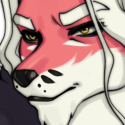 Inaya Inaya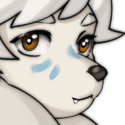 Kailani Kailani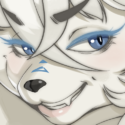 Natalia Natalia(half-cowgirl) 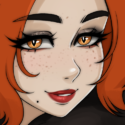 Nieves Nieves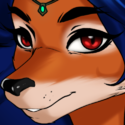 Raphael Raphael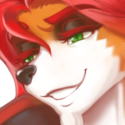
|
